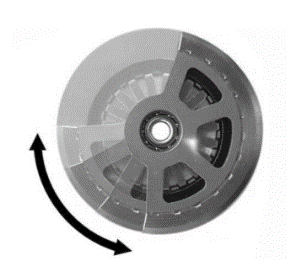
To study the behavior of wild animals, scientists routinely tag them with GPS location trackers. But such devices' battery capacity limits how long they operate, often bringing an early end to significant conservation work. Solar-powered trackers are also a poor choice for they break easily and don't work for night creatures.
So biologist Rasmus W. H. of the University of Copenhagen and his colleagues turned to another abundant power source. After some trial and error, they finally came up with a tiny generator powered by a pendulum (摆锤) inside a closed device. As the tagged animal moves, the swinging pendulum forces a ring to slide across a copper coil, generating current which is then used to power the sensors for GPS unit. The tracker, which could theoretically survive for the entire life span of an active animal, was recently tested on domestic dogs, a wild pony and a European bison. The dogs and bison in the study were active enough to create the energy for one GPS transmission cycle per day for 14 days and 17 days, respectively. One of the wild pony's-trackers lasted at least 146 days but didn't produce enough power for daily transmissions, the researchers reported in Plos One.
The limited power generated by the animals' movements means the new tracker isn't ready for prime time just yet, says ecologist Emily Studd of British Columbia's Thompson Rivers University, who wasn't involved in the study. When researchers want to keep close track of animals, they often need GPS fixes more than once a day. But Studd says that with a bit more development, this could be a game changer for wild-life animal research and monitoring.
Rasmus and his colleagues hope conservation workers can one day use this technology to track species such as tigers, leopards and wolves, which can easily destroy solar-powered trackers and which hunt and travel at night.